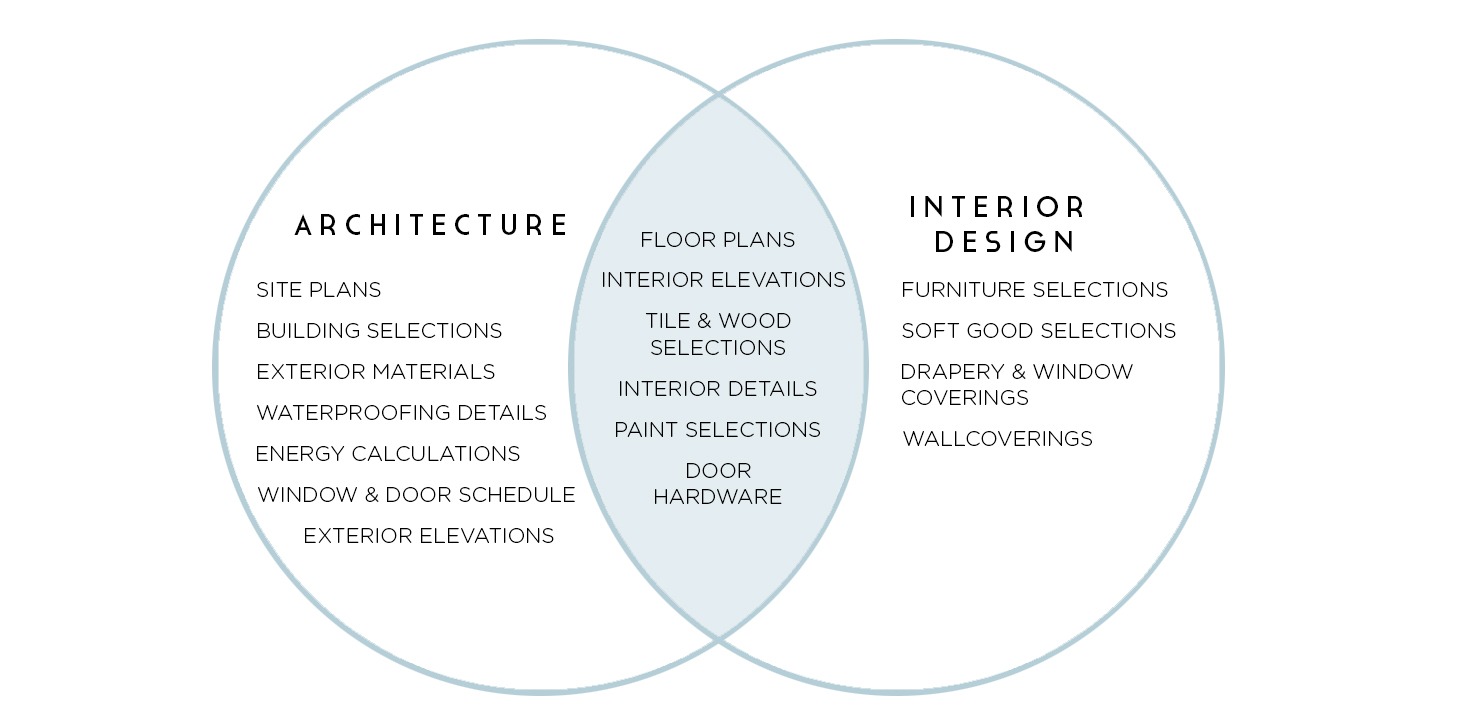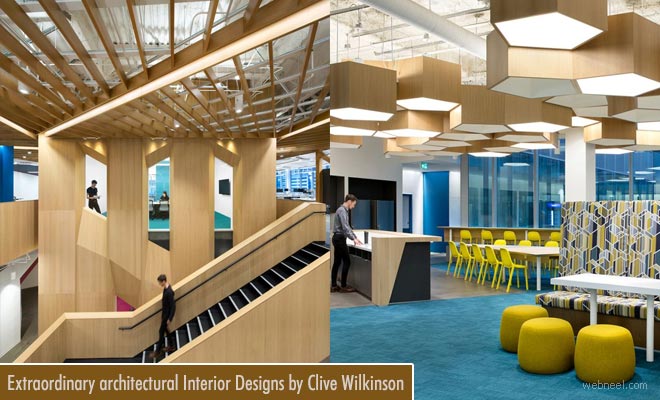Table Of Content

When it comes to interior design styles, contemporary interior design may be the most future-thinking. Defined by clean lines, decorated minimalism, and current trends, contemporary interiors are distinctly of-the-moment—even when the moment changes. Found throughout homes, offices, and retail settings, below AD dives into just what makes this versatile style and how you can bring it into your space. Contemporary interior design is perhaps one of the most commonly-used styles over the past couple of decades, notably due to its timeless features. The style is known for its use of sleek and smooth surfaces, refined furniture selection, and avant-garde art pieces within a neutral, black, or white color scheme.
Santa Monica College
Griffin Enright Architects projects range from large-scale commercial and residential commissions to furniture design and gallery installations, at the local and international level. Griffin Enright Architects' services include sustainability, master planning, urban design, entitlements, architecture, landscape design, and programming. Griffin Enright Architects won the 2014 Watermark Award by Hanley Wood and the 2013 Los Angeles AIA Design Award. An undergraduate degree in interior design or interior architecture gives you the opportunity to level up your skills and build a professional portfolio while you study. Through masterclasses, live projects and industry collaborations, our on-campus and online courses will help you to secure your footing in the design industry. On a practical level, interior architects tend to be involved in construction or renovation projects at an earlier stage than interior designers.
We support your project from start to finish, including:
Interior architects (as legally defined) earn more than interior designers because the former have seven years of training plus a license, while the latter have only three years of training. The jobs may involve a lot of similar skills and day-to-day tasks, but they are not the same. Interior designers have a more aesthetic focus, whereas interior architects must consider both aesthetics and building structure.
Architecture & Interior Design
12 Pacific Northwest Designers and Architects on the AD PRO Directory Who You Need to Know About - Architectural Digest
12 Pacific Northwest Designers and Architects on the AD PRO Directory Who You Need to Know About.
Posted: Tue, 06 Feb 2024 08:00:00 GMT [source]
Interior design plays an important role in architecture, affecting the aesthetic appeal, functionality, comfort, sustainability, identity, and well-being of a building. The aesthetic appeal of a structure significantly increases its overall success. Interior design can make a space more appealing, create a unique identity that presents the building's style and purpose, and evoke emotion.
Best Colleges with Interior Design Degrees in the Los Angeles Area
From Mies van der Rohe’s Barcelona chairs to Charles and Ray Eames’s designs for Herman Miller, countless modernist furnishings have cropped up in the pages of AD through the years. Here, we take you inside a Beverly Hills mansion, a New York City duplex, a Paris apartment, and other homes that display the height of modernist design. Established in 1991, Tracy A. Stone Architect is a full-service Los Angeles architecture firm emphasizing sustainable design in a modernist context. Tracy A. Stone is a LEED Accredited Professional and a member of the US Green Building Council. Choosing between architecture and interior design depends on your skills, interests, and career goals. Both sectors have unique opportunities and challenges, so it is crucial to consider the aspects that resonate most with you.
Minimalist architecture is characterized by its emphasis on simplicity, clean lines, and a "less is more" approach. On the other hand, Scandinavian interior design is based on the same principles, prioritizing functionality and natural light to create interior environments that feel open and uncluttered. Historic revival architectural designs, such as Gothic Revival or Neoclassical, draw inspiration from past eras and reinterpret them for modern times. Reproduction interior design follows suit, recreating historical aesthetics with attention to detail. Transitional architecture usually bridges the gap between traditional and contemporary designs, often combining both aspects. This fluidity finds a counterpart in eclectic interior design, which embraces a blend of design styles, textures, and periods.
Taking an optimistic and explorative approach, the office focuses on creating innovative living environments, places for cultural engagement, urban public space, and contemporary workspaces. Hughes Rowell Design Dept is an architecture studio founded in 2018 with the belief that architecture should be collaborative, responsive, and responsible. Frederick Tang Architecture is a ten-person studio that provides architecture and design services as well as custom offerings in branding, graphic, product, and experience design. The studio emphasizes experimentation, curiosity, and collaboration in its iterative design process. In the 1940s and ’50s, midcentury-modern design, with its clean lines, warm woods, and bold upholstery hues (often in woolly, menswear-inspired textures), changed the way homes looked. Suddenly, less was more, and decorating a home was about finding a design where form served function—a philosophy that continues to inspire designers to this day.

According to Ramsey, many contemporary homes start with a modern shell and are then layered with unique pieces and finds. “It really is just that perfect juxtaposition of modern pieces blended with old-world finds and great art, and it doesn't all stay in one lane,” he says. A contemporary living room designed by Brad Ramsey has a modern shell but brings in plenty of organic and vintage accents. Factors such as temperature control, acoustics, ergonomics, and lighting should be considered during the design process; these are all important when evaluating the easement the space offers its occupants. Additionally, the design should be inclusive and accessible, accommodating everyone. If you are making minor updates to your home, changing out paint, or just enlarging or replacing a few windows and doors, you may not need either an architect or a designer.
Living room designed for acoustics, entertainment

The traditional style focuses on classic furnishings instead of chasing home trends. The minimalist styles asks decorators to consider consumption patterns, not remove all decor and ornamentation for the sake of an aesthetic. The boho aesthetic is a departure from any one style and instead embodies a more playful, free-spirited look.
Excessive use of timber elements and white-washed finishes are the most characteristic of this style, along with mismatched fixtures; vintage sofas and antiques are complimented with contemporary chairs or textiles. Architecture might be a better fit if you are more interested in the general design and planning of buildings. On the other hand, if you are more interested in designing and embellishing living spaces, interior design may be the better option.
Both sectors require a thorough understanding of design concepts and an eye for aesthetics. Interior architecture focuses more on structural design, emphasizing remodeling and adaptive reuse of existing structures. Architects are usually responsible for designing, conceptualizing, and overseeing the construction process, bringing their ideas to life. Their work ranges from designing residential buildings to shaping whole urban landscapes. The functionality of a building's interior is among the most crucial elements to consider when interior designing. The interior design should optimize the available space, whether an existing structure is intended for commercial, residential, or public use.

No comments:
Post a Comment